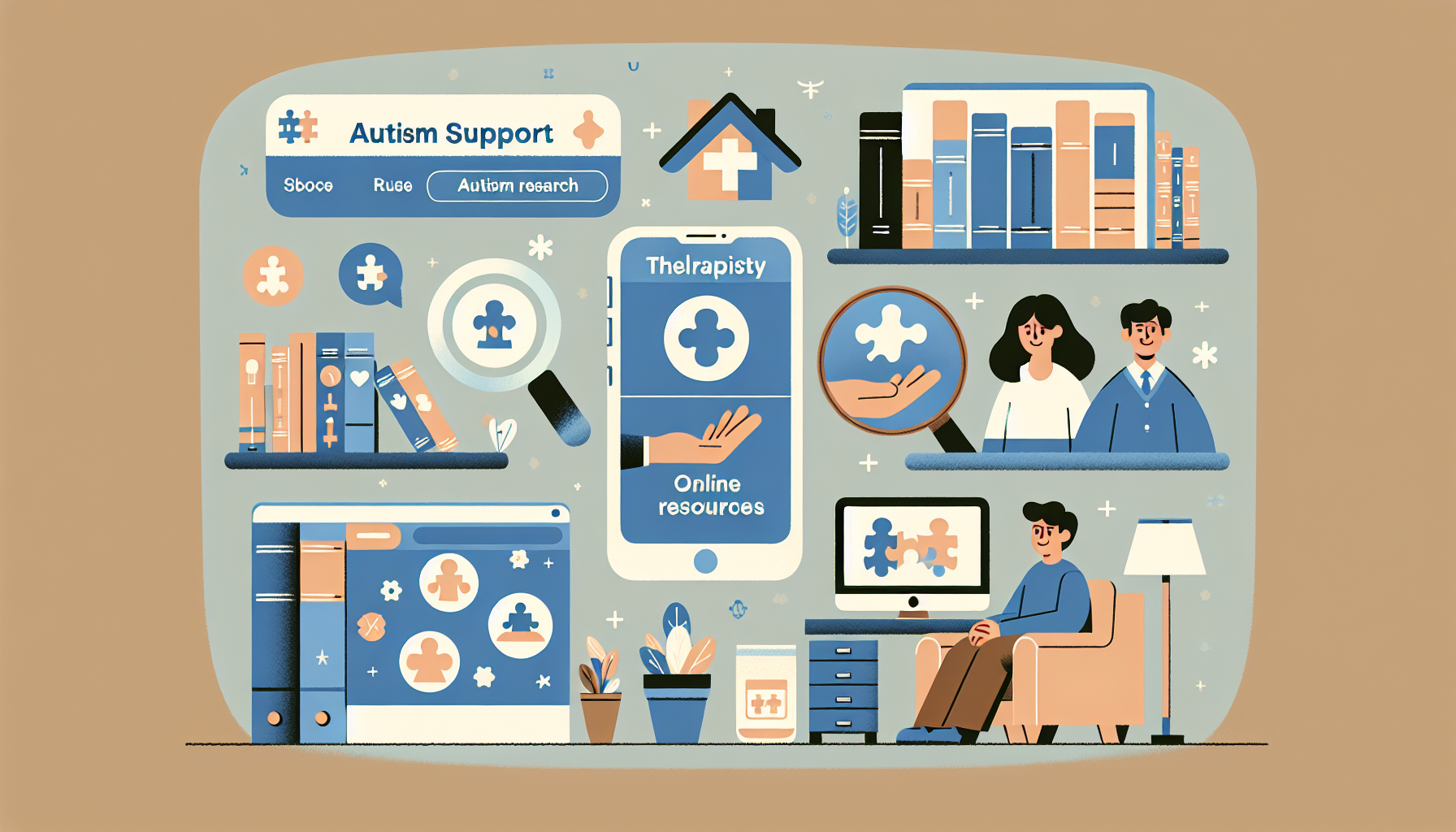Embracing Development: Autism and Puberty Unveiled
Unveiling the impact of puberty on autism. Explore challenges, strategies, and support for a smoother transition.

Understanding Puberty in Autism
Puberty is a significant developmental phase that brings about physical, emotional, and social changes in individuals. For adolescents with autism, this period can pose unique challenges and require additional support. Understanding the challenges faced during the transition and the importance of support structures is crucial for promoting positive outcomes.
Challenges Faced During Transition
Adolescents with autism and their families often encounter difficulties when navigating the transition from childhood to adolescence and beyond. A study exploring the factors important in preparing adolescents with autism for adulthood revealed a need for advocacy, curriculum transformation, and comprehensive planning post-school. Unfortunately, many participants in the study did not have a plan for their children with autism after leaving the formal education system, highlighting the lack of support and service facilities available for this population.

During puberty, autistic individuals may experience challenges related to sensory sensitivities, emotional regulation, and social interactions. Social changes and the development of relationships can be particularly complex for autistic teens. The transition into adolescence can be overwhelming, leading to feelings of fear, uncertainty, but also hope and optimism.
Importance of Support Structures
Having appropriate support structures in place is essential for helping autistic individuals navigate the challenges of puberty. With the right support and attention, individuals with autism can achieve a reasonable quality of life, including residential, employment, and social opportunities. This highlights the significance of providing adequate support services and facilities tailored to the unique needs of autistic adolescents.
Support structures should address various aspects, including communication, social learning, and cognitive-behavioral strategies. Adolescents with autism may require guidance in understanding and navigating complex social situations, distinguishing between private and public behaviors, and developing appropriate sexuality-related behaviors [2]. Teaching self-regulation strategies and providing understanding and patience are also crucial for helping autistic teenagers manage emotional fluctuations during puberty.
By recognizing the challenges faced during the transition into puberty and acknowledging the importance of support structures, we can ensure that autistic adolescents receive the assistance they need to navigate this period successfully. With the right support, guidance, and understanding, individuals with autism can overcome challenges and thrive during this transformative phase of their lives.
Impact of Puberty on Autistic Teens
Puberty is a period of significant change and transition for all adolescents, and autistic teens may face unique challenges during this time. Understanding the impact of puberty on autistic teens is crucial in providing the necessary support and guidance. Two key areas that can be affected during this period are sensory sensitivities and emotional development, as well as social changes and relationships.
Sensory Sensitivities and Emotional Development
Puberty can intensify pre-existing autism spectrum traits, such as sensory sensitivities and developmental delays. Autistic teens may experience heightened sensitivities or anxieties related to physical changes. The hormonal changes during puberty can have an impact on how adolescents on the spectrum interact with the world.
During puberty, autistic teens may be more sensitive to sensory input, making physical changes such as the growth of body hair or changes in voice potentially overwhelming. Tailored approaches are needed to manage these new sensations and provide support to navigate the challenges that arise from sensory sensitivities.
Emotional development is another aspect that can be affected during puberty. Autistic teenagers often face difficulties in regulating emotions, and the hormonal fluctuations of puberty can exacerbate these challenges. Teaching self-regulation strategies, providing understanding, and practicing patience are important during this period to help autistic teens navigate their emotions effectively.
Social Changes and Relationships
Puberty brings about significant social changes for all teenagers, and autistic teens may need additional support in understanding and navigating complex social situations. Developing an understanding of social norms and differentiating between private and public behaviors, especially in relation to developing sexuality, can be particularly challenging.
Autistic adolescents may require guidance and social skills training to help them build and maintain relationships during this time. Providing a safe and supportive environment where they can ask questions, express concerns, and learn about social expectations can be beneficial. Additionally, fostering open communication channels with parents, caregivers, and educators can ensure that autistic teens receive the necessary guidance and support to navigate social changes effectively.
By recognizing and addressing the impact of puberty on autistic teens, we can create an inclusive and supportive environment that promotes their well-being and development. Understanding sensory sensitivities, supporting emotional regulation, and providing guidance in social situations are essential in helping autistic teens navigate the challenges and changes that arise during puberty.
Managing Puberty Challenges
Puberty can pose unique challenges for individuals on the autism spectrum. It's crucial to address these challenges and provide appropriate support to help autistic teenagers navigate this period of development. Three key areas to focus on are coping with sensory overload, promoting emotional regulation, and developing social skills.
Coping with Sensory Overload
During puberty, autistic teenagers may experience sensory overload, particularly in relation to the physical changes associated with this stage of life. For example, the growth of body hair or changes in voice can be overwhelming for individuals with sensory sensitivities. To help manage these new sensations, tailored approaches are needed.
Some strategies that can assist in coping with sensory overload include:
- Providing a calm and predictable environment.
- Offering sensory breaks or spaces where the individual can retreat to when feeling overwhelmed.
- Teaching relaxation techniques, such as deep breathing or mindfulness exercises.
- Using visual supports, such as schedules or social stories, to prepare for and navigate sensory-rich situations.
By implementing these strategies, individuals with autism can better cope with the sensory challenges that arise during puberty and feel more comfortable in their changing bodies.
Promoting Emotional Regulation
Autistic teenagers often face difficulties in regulating emotions, which can be compounded by the hormonal fluctuations of puberty. Teaching self-regulation strategies and providing understanding and patience are important during this period.
Some techniques that can promote emotional regulation include:
- Teaching individuals to identify and label their emotions.
- Providing a safe space for expression, such as a designated time to talk or a journal to write in.
- Teaching coping mechanisms, such as deep breathing, visualization, or engaging in preferred activities.
- Encouraging the development of self-advocacy skills, enabling individuals to express their needs and emotions effectively.
By empowering autistic teenagers with tools to regulate their emotions, they can better navigate the emotional changes that accompany puberty.
Developing Social Skills
Social changes and relationships can also pose challenges for autistic teenagers during puberty. They may require support in understanding and navigating complex social situations, including differences between private and public behaviors, especially in relation to developing sexuality.
To develop social skills, some strategies include:
- Providing explicit instruction on social cues and appropriate behavior in different contexts.
- Offering opportunities for social interaction, such as structured group activities or social skills groups.
- Teaching relationship boundaries and personal safety, including understanding consent and recognizing inappropriate behavior.
- Facilitating peer connections and fostering friendships through shared interests and activities.
By focusing on developing social skills, autistic teenagers can enhance their social interactions, build meaningful relationships, and navigate the complexities of social dynamics during puberty.
Supporting autistic teenagers through the challenges of sensory overload, emotional regulation, and social skills development during puberty is crucial for their overall well-being and successful transition into adulthood. By implementing tailored strategies and providing a supportive environment, we can empower them to navigate this stage of development with confidence.
Addressing Unique Needs
When it comes to addressing the unique needs of autistic individuals during puberty, there are specific areas that require attention and support. Communication and social learning, as well as cognitive-behavioral strategies, play a crucial role in helping autistic teenagers navigate this transitional period.
Communication and Social Learning
Autistic adolescents often face social changes during puberty and may require guidance in understanding and navigating complex social situations, including the development of sexuality. They may find it challenging to differentiate between private and public behaviors, especially when it comes to social interactions. Providing clear and explicit guidance can help them develop appropriate social skills and understand the nuances of social interactions.
Structured social learning programs can be beneficial for autistic teenagers. These programs focus on teaching social skills, such as initiating and maintaining conversations, understanding non-verbal cues, and interpreting social situations. By providing opportunities for practice and reinforcement, these programs help autistic individuals build confidence and improve their social interactions.
Cognitive-Behavioral Strategies
Autistic teenagers may experience difficulties in regulating emotions, which can be intensified by the hormonal fluctuations of puberty. Teaching self-regulation strategies is essential during this period. Autistic individuals can benefit from learning techniques such as deep breathing, mindfulness exercises, and identifying and expressing emotions in a healthy way. These strategies help them manage stress, anxiety, and emotional challenges that may arise during puberty.
Cognitive-behavioral therapy (CBT) is another effective approach for addressing cognitive and emotional challenges in autistic teenagers. CBT focuses on identifying and modifying negative thought patterns and behaviors. It helps individuals develop coping mechanisms, problem-solving skills, and resilience, which can be particularly valuable during the transitional period of puberty.
By addressing the unique needs of autistic individuals through effective communication and social learning strategies, as well as cognitive-behavioral techniques, we can provide essential support during the challenging phase of puberty. It is important to tailor interventions to the specific needs of each individual, considering their strengths and challenges, to promote overall well-being and successful navigation of this developmental stage.
Strategies for Transitioning
Transitioning from one activity or setting to another can be challenging for individuals with autism, especially during puberty. Implementing effective strategies can help ease the transition process and promote a smoother experience. Two key strategies for supporting individuals with autism during transitions are visual schedules and maintaining predictability and routine.
Visual Schedules and Transition Techniques
Visual schedules are an invaluable tool in assisting individuals with autism during transitions. They provide a visual representation of upcoming activities, helping individuals to understand the sequence of events and increasing overall predictability. According to Indiana University Bloomington, visual schedules have been shown to decrease transition time, reduce challenging behaviors, and increase independence.
These schedules can be created using objects, photos, icons, or words, depending on the individual's needs and preferences. By using visual cues, individuals with autism can receive advance notice of upcoming transitions, aiding in their understanding and preparation. Visual schedules can be presented in various formats, such as on a wall, in a binder, or on a portable device, making them easily accessible and adaptable.
Importance of Predictability and Routine
Establishing routines and maintaining predictability is crucial for individuals with autism during puberty. Consistent daily schedules provide a sense of structure and stability, reducing anxiety and promoting a smoother transition process. By incorporating visual supports, such as visual schedules or social stories, individuals with autism can better understand and anticipate the events that will occur throughout the day.
Maintaining a predictable routine involves setting clear expectations and providing ample time for transitions. Offering verbal reminders or using timers can help individuals with autism prepare mentally for upcoming changes. It is important to communicate these changes in a calm and reassuring manner to minimize anxiety and promote a sense of security.
By focusing on the use of visual schedules and maintaining predictability and routine, individuals with autism can navigate transitions more effectively, leading to increased independence and reduced stress. These strategies can be implemented in various settings, including school, home, and community environments, to support individuals with autism during the challenging period of puberty.
Enhancing Personal Hygiene Skills
During puberty, autistic pre-teens and teenagers undergo various physical changes that require them to acquire new personal hygiene skills. These skills include using deodorant, wearing clean clothes, managing pimples, shaving, and handling periods. It is important for these individuals to learn to independently manage their personal hygiene routines to adapt to their changing bodies.
Acquiring New Hygiene Skills
Autistic pre-teens and teenagers may require additional support and guidance in acquiring new hygiene skills. It is crucial to provide them with products that are suitable for their sensory needs, such as fragrance-free deodorant or specific period products. These accommodations can help make the process more comfortable and manageable for them.
To facilitate learning, visual supports, social stories, and video modelling can be effective strategies for autistic individuals who are often visual learners. Utilizing tools like visual schedules can assist in breaking down hygiene routines into manageable steps, allowing for a clearer understanding of the tasks involved.
Utilizing Visual Supports
Personalized visual schedules can be highly beneficial in guiding autistic pre-teens and teenagers through their hygiene routines. These schedules can be tailored to the individual's needs and preferences, utilizing pictures and words to outline steps such as showering, washing the face, brushing teeth, using deodorant, and getting dressed into clean clothes. By following the visual cues, individuals with autism can navigate through the steps of their hygiene routine more independently.
Social stories are also valuable tools in teaching personal hygiene skills to autistic individuals. These stories help them understand the reasons behind hygiene practices and teach them how to perform these tasks. For example, a social story about sweating, washing, and using deodorant can explain the importance of maintaining personal hygiene practices like showering and applying deodorant to prevent body odor. By using relatable narratives and visuals, social stories can aid in the comprehension and adoption of proper hygiene habits.
Another effective method for teaching personal hygiene skills is video modelling. Parents or caregivers can create videos demonstrating specific tasks, such as putting on deodorant or washing the face. Autistic pre-teens and teenagers can watch these videos to learn and imitate the behavior, helping them gain a better understanding of the steps involved in their personal hygiene routine.
By focusing on personalized visual supports, social stories, and video modelling, individuals with autism can enhance their personal hygiene skills and successfully navigate the challenges that puberty brings. These strategies provide the necessary structure and guidance to help them develop and maintain good hygiene habits as they transition through this important stage of life.




































































































